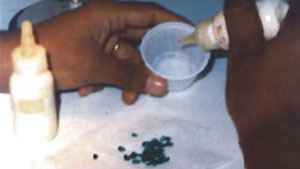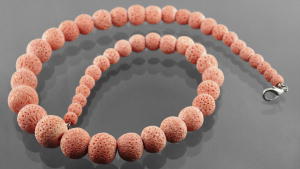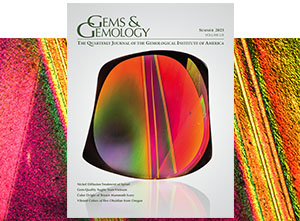
The filling of surface-reaching breaks in emeralds is a relatively common practice, for which various kinds of oils and a natural resin have historically been used.
Read More
A coral specimen that was coated—not dyed—with a coloring agent only on the surface, an unusual method evidenced by microscopic features.
Read More
A sphere of Armenian turquoise with natural brown matrix material mimics planet Earth.
Read MoreNew York — July 26, 2017 — Dr. James Shigley, GIA distinguished research fellow, is the recipient of the American Gem Society (AGS) 2017 Lifetime Achievement Award. Shigley’s significant contributions to the industry were honored at the organization’s annual Circle of Distinction dinner held July 25 in New York City.
Read MoreA simple test easily detected dye treatment in fire opal.
Read More
Presents a study that suggests optically brightened pearls can be consistently separated from non-brightened pearls using fluorescence spectroscopy.
Read More Article
Article
Check out some of the most interesting and unusual diamonds and colored stones submitted to GIA’s laboratories in 2019.
Read More
Examines the use of strong fluorescence near 394 nm under 320 nm excitation as a potential means of identifying copper diffusion treatment of feldspar.
Read More
Provides criteria for detecting the resin filling of turquoise, an advanced treatment that reduces porosity and can dramatically improve appearance and stability.
Read More Article
Article
An overview of the Summer 2023 Gems & Gemology content.
Read More


